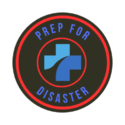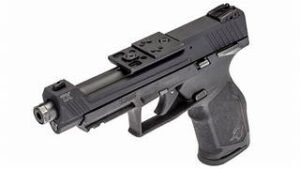In any survival scenario, being adequately equipped can make the difference between life and death. One essential equipment choice is the survival firearm. The vast range of firearms can be daunting, from handguns to rifles and shotguns. This survival firearm guide simplifies and aligns those choices with your needs.
Table of Contents

Breaking Down the Basics
Handguns: Compact firearms that can be operated with one hand.
- Semi-Automatic: Fires one round with each trigger pull and self-reloads.
- Revolvers: Houses several rounds in a rotating cylinder.
- Derringers: Small pocket pistols with usually two shots. Great for a survival backup.
Rifles: When precision and range matter, rifles come into play.
- Bolt-Action: Known for their accuracy, they are manually operated.
- Semi-automatic: They self-reload and can fire rapidly.
- Lever-Action: A classic choice with a unique lever mechanism.
Shotguns: Ideal for close-quarters situations due to their widespread shot.
- Pump-Action: Manually cycled but reliable.
- Semi-Automatic: Fires quickly with self-reloading.
- Break-Action: A simple design where barrels “break” open to load.
Thinking About Bullet Size and Type
Caliber and Gauge: The caliber (for handguns and rifles) or gauge (for shotguns) determines the size and impact of the bullet. While a higher caliber or lower gauge generally means a bigger bullet, it also might mean more recoil.
Availability: Especially in survival situations, common calibers like the 9mm (for handguns) or .223 (for rifles) might be easier to find.
Purpose: Calibers like .22 are great for small game, while larger ones like .308 can bring down bigger prey.
Why Are You Using the Gun?
For Protection: When quick defense is paramount, handguns shine due to their portability. Compact semi-automatics or snub-nose revolvers can be concealed and drawn quickly.
For Hunting: Survival often means sourcing your food. Rifles, with their range and accuracy, are indispensable for hunting. A bolt-action rifle chambered in a versatile caliber can help you hunt various game, from deer to smaller animals.
How Much Gun Can You Carry?
Being able to move easily is vital. While small handguns are light and easy to handle, you might need bigger guns with longer barrels for long shots. So, try to find a balance between gun size and its purpose.
Can Your Gun Handle the Elements?
Your gun must work well in all environments, whether rain, sand, or cold weather. Choose guns known for being tough and long-lasting.
How Many Bullets and How Fast Can You Reload?
In tough situations, shooting multiple times without reloading can be very helpful. Guns like semi-automatics hold more bullets. Also, always ensure you can reload your gun quickly and easily.
A Closer Look at Your Options (Click image for price)
Handguns:
- Small Handguns: Great for hiding and quick use. Examples are the Glock 19 and Sig Sauer P365.
- Revolvers: These are simple, sturdy guns. Popular ones include the Smith & Wesson Model 686.
Rifles:
- Quick-Shooting Rifles: These allow for fast shooting. The AR-15 is a good example.
- Precise Rifles: These are for sharp, accurate shots, with different sizes suitable for different tasks.
- Compact Rifles: These are great for tight spaces and fast use.
Shotguns:
- Pump-Action: These are reliable and can fire different types of shots.
- Quick-Use Shotguns: These allow for quick shooting and are ideal for self-defense.
Conclusion – Survival Firearm
Picking the right firearm is essential for survival. Practice makes perfect, whether it’s a trusty revolver, a versatile rifle, or a powerful shotgun. The more you know and practice with your chosen gun, the better prepared you’ll be. Always prioritize safety and stay informed to make the best decision.









